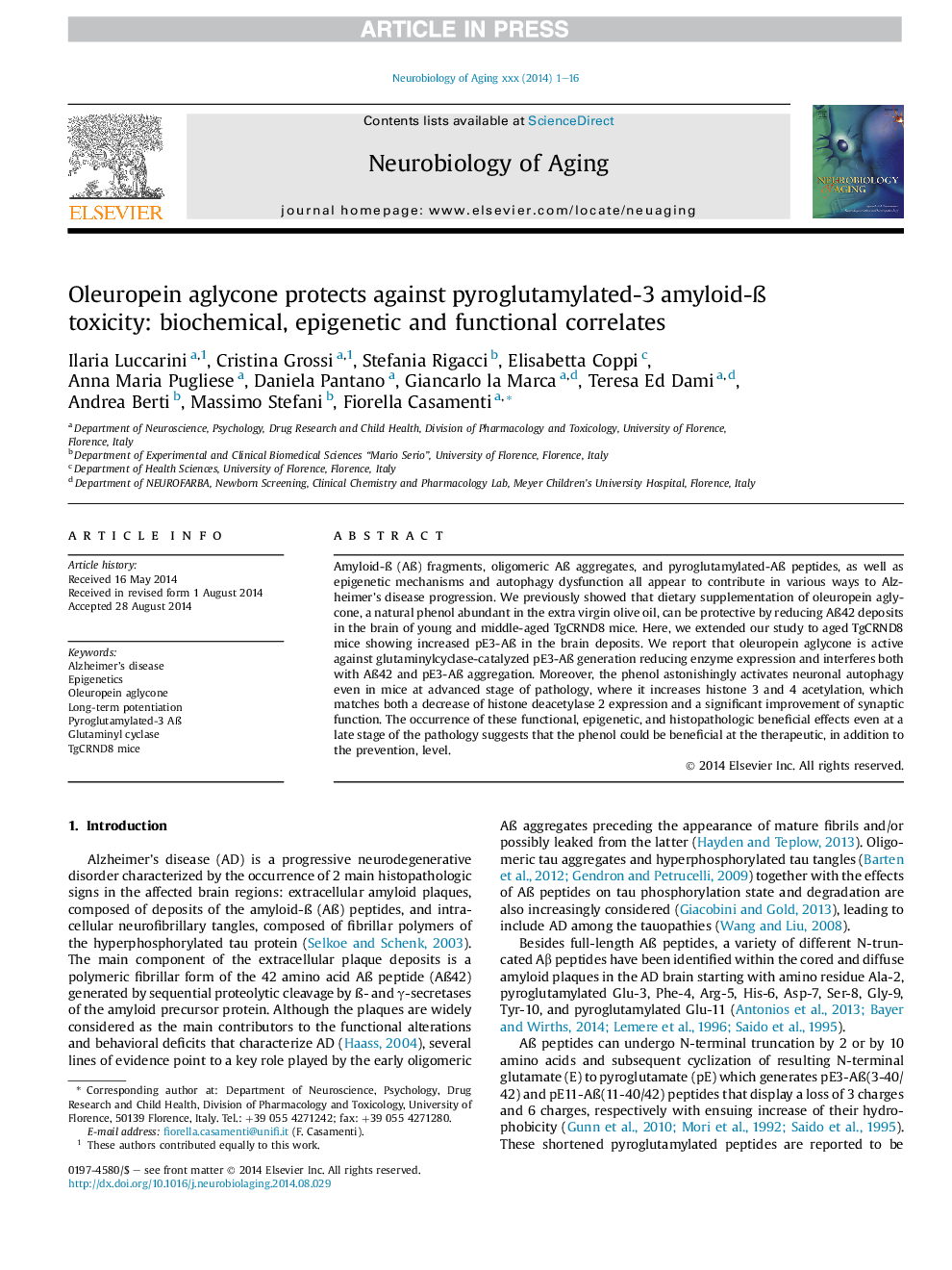| Article ID | Journal | Published Year | Pages | File Type |
|---|---|---|---|---|
| 6804731 | Neurobiology of Aging | 2015 | 16 Pages |
Abstract
Amyloid-Ã (AÃ) fragments, oligomeric AÃ aggregates, and pyroglutamylated-AÃ peptides, as well as epigenetic mechanisms and autophagy dysfunction all appear to contribute in various ways to Alzheimer's disease progression. We previously showed that dietary supplementation of oleuropein aglycone, a natural phenol abundant in the extra virgin olive oil, can be protective by reducing AÃ42 deposits in the brain of young and middle-aged TgCRND8 mice. Here, we extended our study to aged TgCRND8 mice showing increased pE3-AÃ in the brain deposits. We report that oleuropein aglycone is active against glutaminylcyclase-catalyzed pE3-AÃ generation reducing enzyme expression and interferes both with AÃ42 and pE3-AÃ aggregation. Moreover, the phenol astonishingly activates neuronal autophagy even in mice at advanced stage of pathology, where it increases histone 3 and 4 acetylation, which matches both a decrease of histone deacetylase 2 expression and a significant improvement of synaptic function. The occurrence of these functional, epigenetic, and histopathologic beneficial effects even at a late stage of the pathology suggests that the phenol could be beneficial at the therapeutic, in addition to the prevention, level.
Keywords
Related Topics
Life Sciences
Biochemistry, Genetics and Molecular Biology
Ageing
Authors
Ilaria Luccarini, Cristina Grossi, Stefania Rigacci, Elisabetta Coppi, Anna Maria Pugliese, Daniela Pantano, Giancarlo la Marca, Teresa Ed Dami, Andrea Berti, Massimo Stefani, Fiorella Casamenti,
